inside
The Green Mile
In the new home of a young Tacloban public figure and his family, going the extra green miles brings in a breath of fresh air and the little theatrical drama they need for a great start.

In the new home of a young Tacloban public figure and his family, going the extra green miles brings in a breath of fresh air and the little theatrical drama they need for a great start.

DRIVING INTO THE Yaokasin compound at dusk in Tacloban City, Leyte, one can’t help but shift their attention to the dramatically-lit house of Councilor Jerry “Sambo” Yaokasin. Immediately, from the subtle asymmetrical PVC and aluminium roofing, it was clear that this was done by Architect James Jao, and that this was going to be another eco-blueprint, and a first of its kind in this city.


But before anything else, let’s get some things right. Going “green” doesn’t always and necessarily mean covering your house with solar panels, or spending a fortune, or even growing your own organic garden. It can also mean simply taking measures and initiatives by using products, materials and design schemes that encourage less energy use, and are health-friendly.


This 600-square-meter house is one of two residential houses that rest in this 3,000-square-meter compound beside the Kankabatok Lake. Just like the man of the house who is a father, a businessman, a pastor, and a city councilor, the home is multi-faceted: it incorporates eco-friendly materials and stratagem with modern design. This was going to be an eco-home that not only minimized energy consumption but maximized comfort.

The homeowners were very hands on with the design which took about three months to plan but the construction was not completed until two years. Kathleen, the lady of the house, is the Cebu link, originally being from Lahug. Architect James Jao was recommended by her close friend, Jane Ong, of much-loved Cebu pastry shop Leona fame, and the rest, as they say, is history.


The driveway alone is already eco-friendly. The pavers brick is porous and sturdy. It absorbs the moisture and is therefor very low maintenance. A head turner early on in the entrance is the totem pole-like structure in the fore-garden. Is it an abstract sculpture or just a fossilized wood-plank? “Carved by nature,” Architect Jao exclaimed of the drift-wood Councilor Yaokasin had secured from a trip to the nearby provinces. The plank-cum-sculpture adds the perfect touch to the landscape done by Oscar Villanueva.

Taking a small step back, the architect’s “interpenetrating” technique allows some flora to break the solidity of the house’s design, adding life to the structure itself. Still from a distance one can see that very basic Feng-shui was applied to the structure, but so elementary as it was purely out of logic: the main door faces the east because to the west is a wall to mark the property’s boundary; and all downspouts were positioned to be against this same wall so that no water would obstruct the pathways when it rains and thus the rain water is also easily captured (rain water harvesting) and lightly-filtered to be used for household work like laundry or washing cars.

Coming closer to the house, the exterior walls are sandstone tiles from Kaufman in Manila. The solid hardwood double door opens into the foyer and also to the breezeway, a narrow path that leads to the atrium, where another drift-wood-cum-art piece rests. The breezeway distances the rest of the living spaces from the most exterior glass wall. It’s not just to minimize the heat but also to allow a little more privacy while still allowing the glass to let in as much natural light as possible. Architect Jao used low-E (Emissivity) glass, which keeps in the cool and in effect lessens the air-conditioning required. As for the air conditioners, the family opted for Samsung’s inverter air conditioners. Sure they might be a little heavier on the pocket, but they consume and cost less per kilowatt hour. Going green is about encouraging lower maintenance and in effect, later but bigger, savings.

A whole gamut of other energy conserving techniques were applied to the interiors including the floor tiling, which uses Inalco Slimmker tiles, brought in from their Cebu supplier. What makes these tiles eco-friendly is that they are slimmer, and therefore were produced with seventy percent less of the manufacturing carbon footprint without compromising their durability.
 Where there is no low-E glass there is tile, and where there is no tile there is low-VOC paint (a non-toxic, fast-drying paint), “Healthy Home” paint, from Boysen Paints. It is perfect for families with small children. Where there is no paint there is wall-art, a James Jao interior signature. The elegant floor-to-ceiling wall-art in the Yaokasins’ living room is of locally-sourced tigerwood: wood bricks shaped by the architect into an abstraction of a mother’s womb.
Where there is no low-E glass there is tile, and where there is no tile there is low-VOC paint (a non-toxic, fast-drying paint), “Healthy Home” paint, from Boysen Paints. It is perfect for families with small children. Where there is no paint there is wall-art, a James Jao interior signature. The elegant floor-to-ceiling wall-art in the Yaokasins’ living room is of locally-sourced tigerwood: wood bricks shaped by the architect into an abstraction of a mother’s womb.

Lighting was also a key element of the overall design, something that the architect is also very particular with. His background in stage design and lighting–having been mentored by National Artist for Theatre, Rolando Tinio, and CCP’s Teddy Hilado, in the mid to late 80’s–makes Architect Jao very passionate about dramatic lighting. “Because it’s all about drama,” he mustered. “Everything is basically reflected light, except of course, in the dining and foyer areas, where you need to see everything.” All the lighting equipment was secured from Megaman, distributed by Cebu Home and Builders. The up-light in the living room, for example, is a metal-halide, by Endo from Licht and Design. The architect used this instead of the usual chandelier because of its low-maintenance and ambient lighting effect.

The truth is, a green home is more expensive to build, with twenty percent more cost, explained Architect Jao. Cutting costs and corners in design is not what going green is about, but instead it is in taking of such measures that will, in the long run, significantly reduce energy consumption and house bills, and this will surely make the neighbors green with envy.
Events
A Feast for the Senses
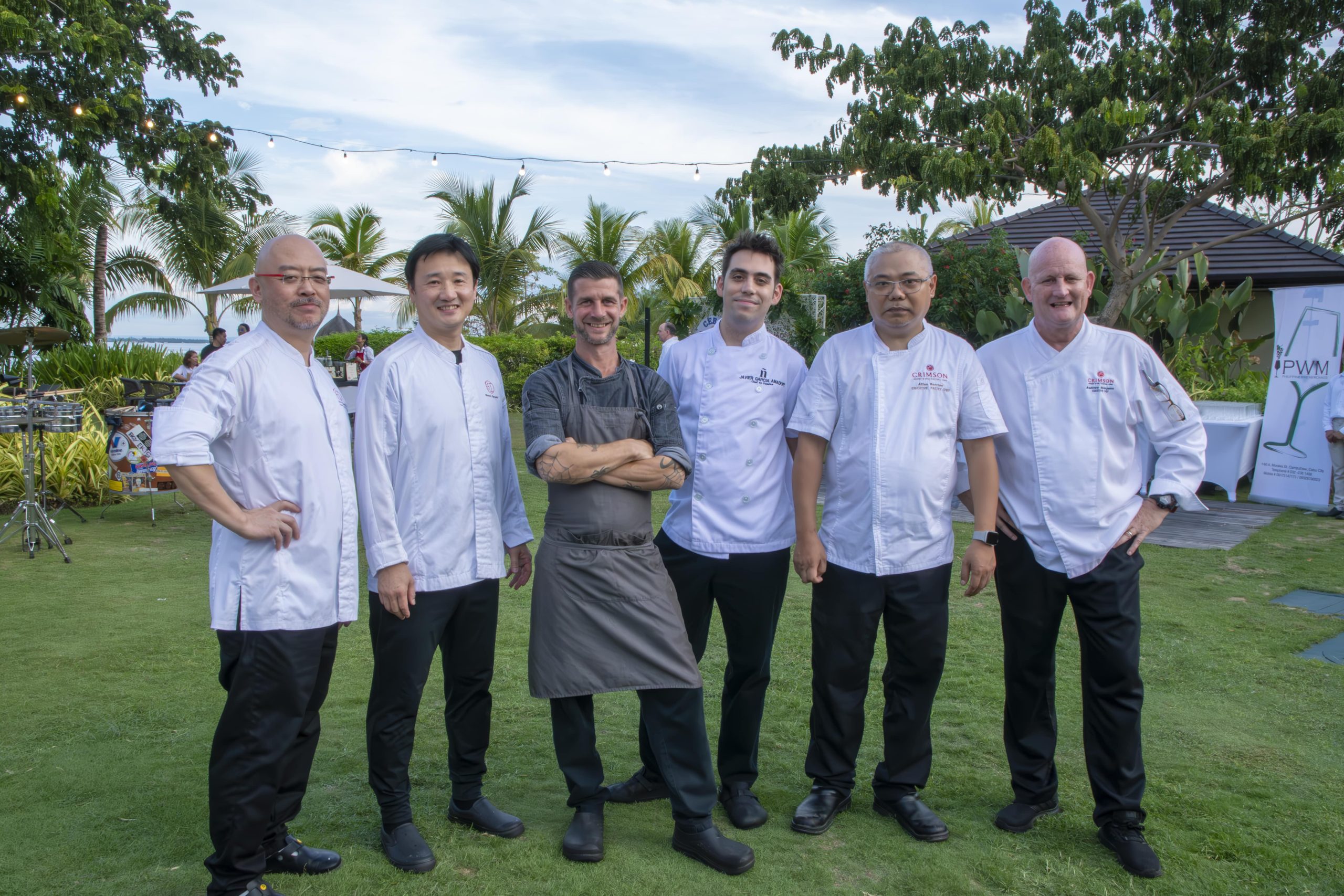
By Joanna Cuenco
June 8 – Mactan, Cebu | For one of its biggest dining events of the year as part of the highly anticipated Cebu Food and Wine Festival, Crimson Resort and Spa Mactan curated an epicurean journey that brought guests on gastronomic flights of fancy, fine cuisine. A Feast for the Senses showcased the creativity and excellence of the resort’s culinary team through a dine-around event at its four dining destinations that invited guests to sample the best that each restaurant had to offer: international cuisine at Saffron, Spanish at Enye by Chele Gonzalez, Japanese at Aka by Naoki Eguchi, and desserts and more drinks at Azure Beach Club.
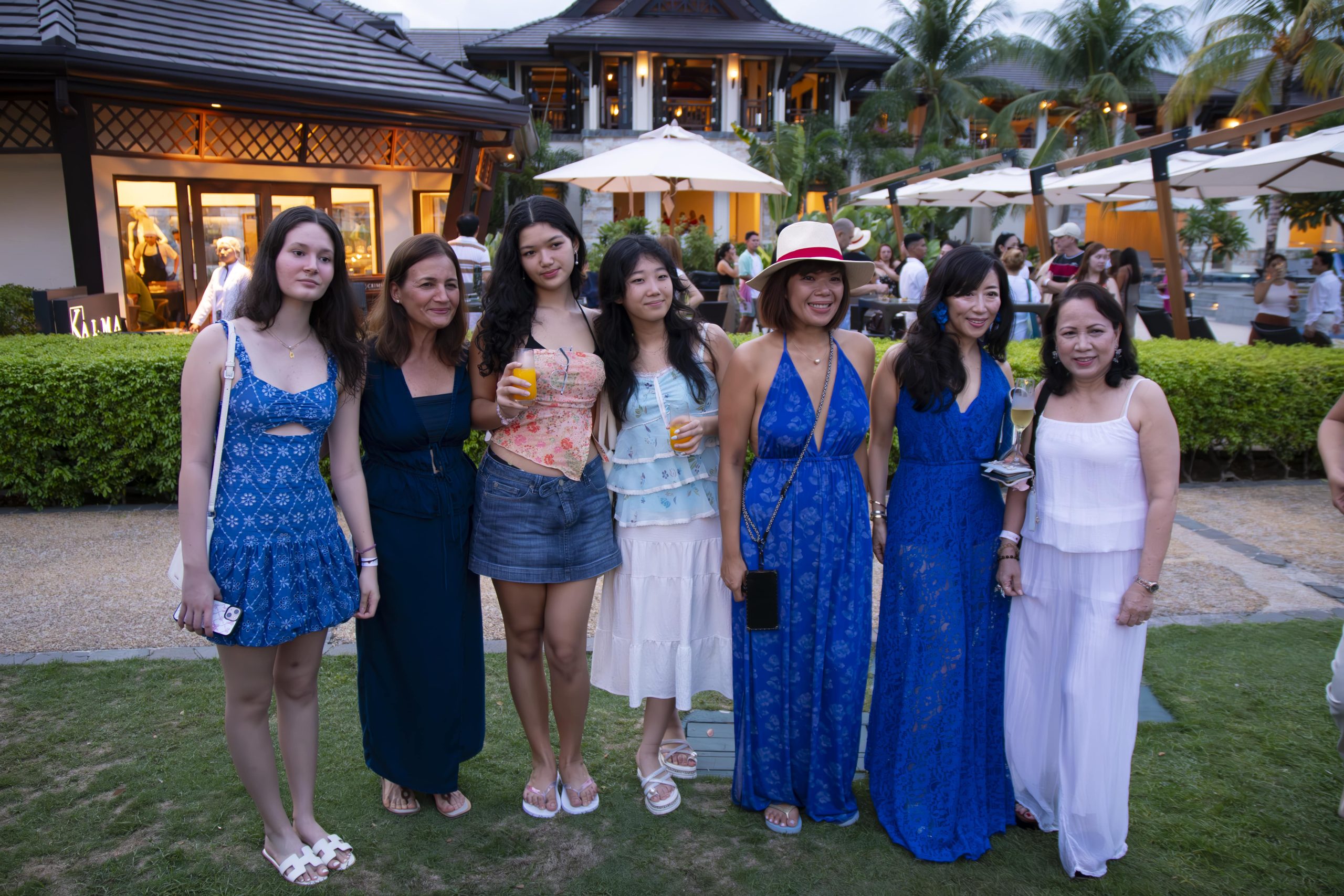
Maria Paz Perdices, Ambra Anzani, Ema Onda,Kate Anzani, Kumiko Onda, Daisy Barns
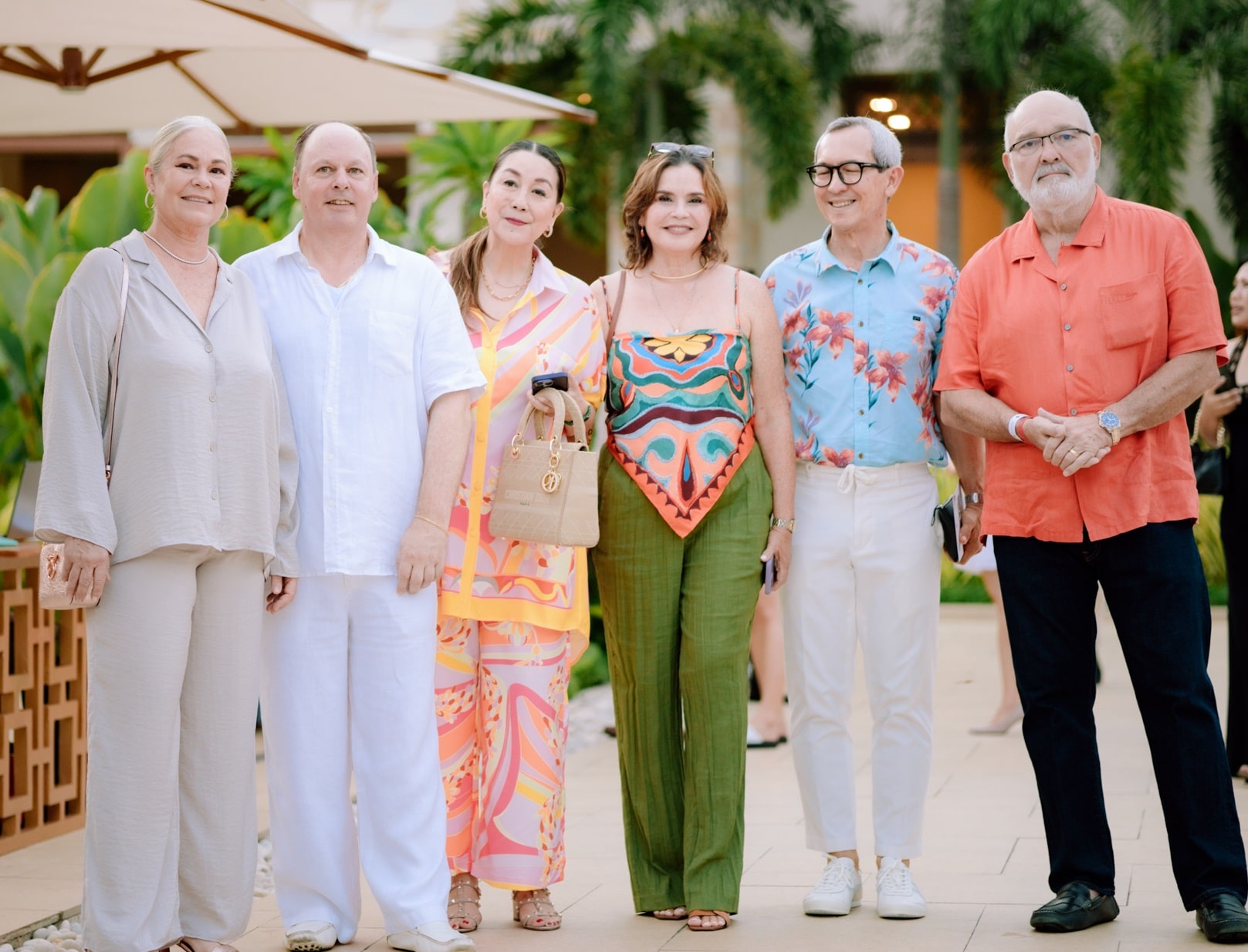
Tamsin Booth, Didier Belmonte, Frances Siao, Celeste Miranda, Bert Miranda, Bob Booth
Spirits were high and beverages flowed freely the whole evening, thanks to Philippine Wine Merchant, A Wine Company, The Wine Club, Don Revy, Sommelier Selection, Engkanto Brewery, M. Lhuillier Food Product Inc., Future Trade International, Happy Living Philippines, Equilibrium Intertrade Corporation, and Bauhinia Brewery.
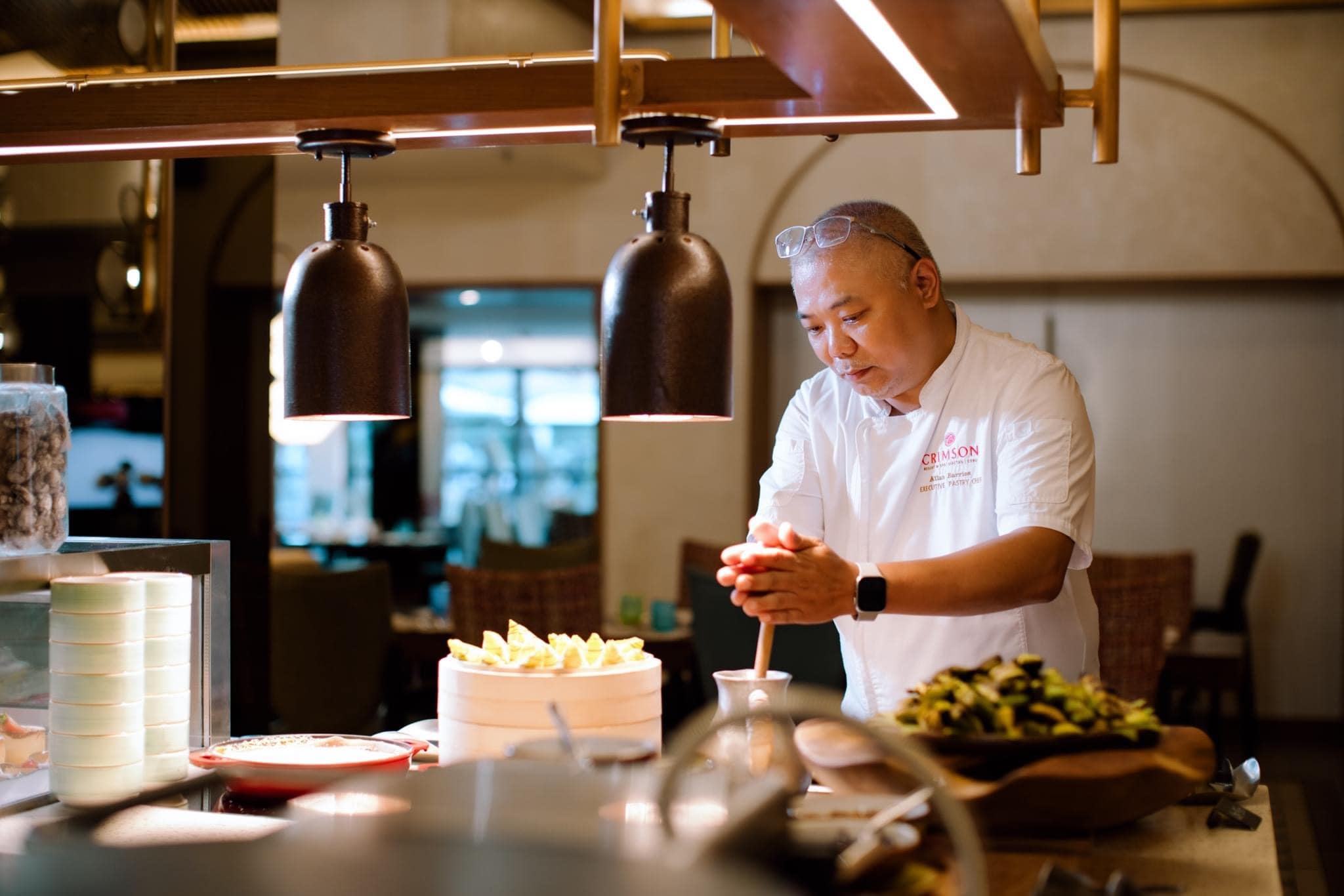
Allan Barios at Saffron dessert station
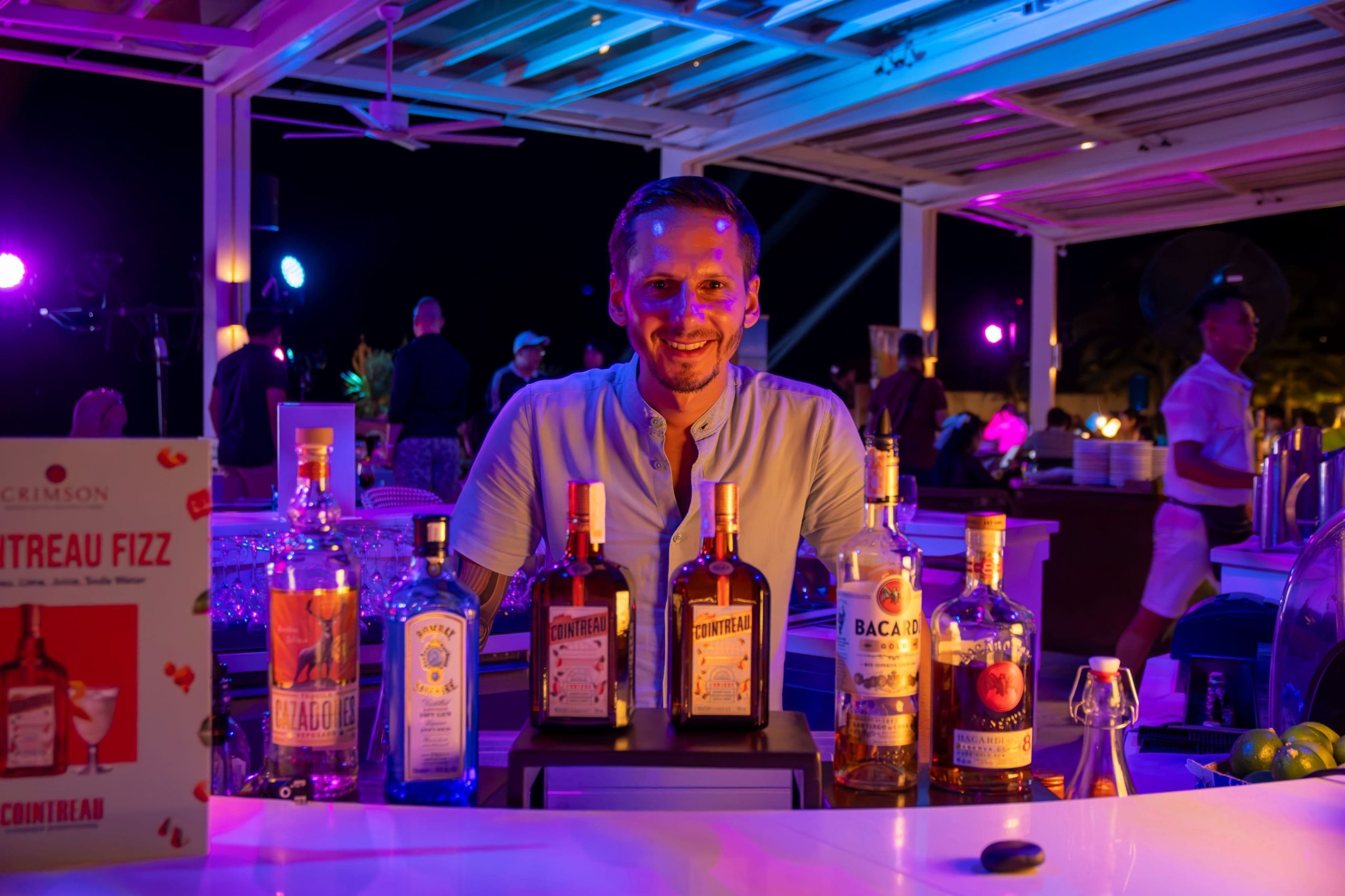
Ulysse Jouanneaud
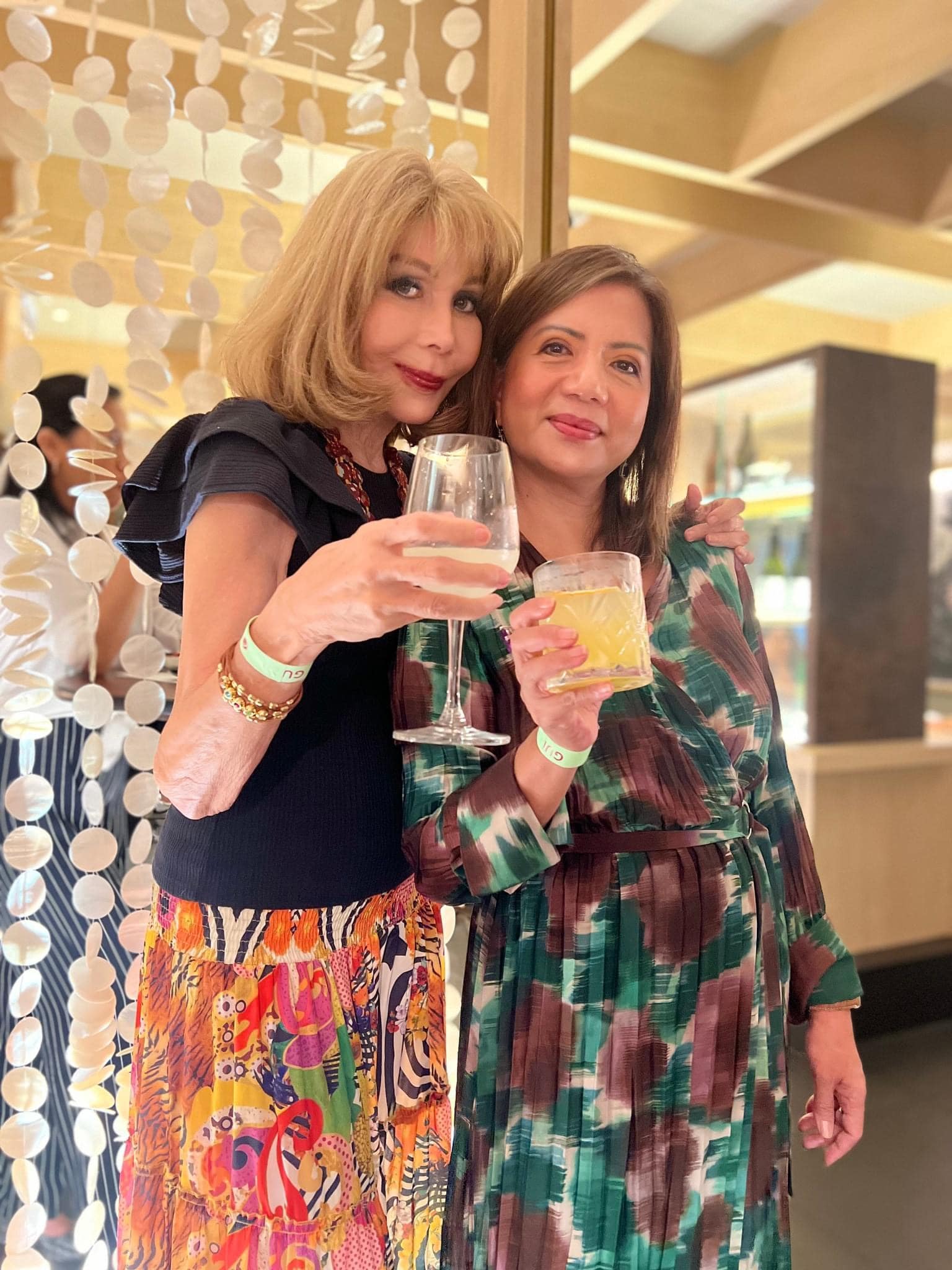
Margarette Lhuiller and Perl Jacalan
For the after-party and entertainment at Azure Beach Club, renowned mixologist Ulysse Jouanneaud took over the bar, crafting cocktails with Bacardi, Don Papa, Cointreau, and Sula Brands. Chef Allan Barrios presented a dessert spread that included key lime pralines, vanilla bourbon truffles, honey coconut cryos, and tiny flower-potted bamboo shoots that turned out to be made of pistachio. These little works of art were planted alongside vibrant green foliage, smooth stones, and a faux fog effect that created a tropical rainforest diorama out of the dessert table.
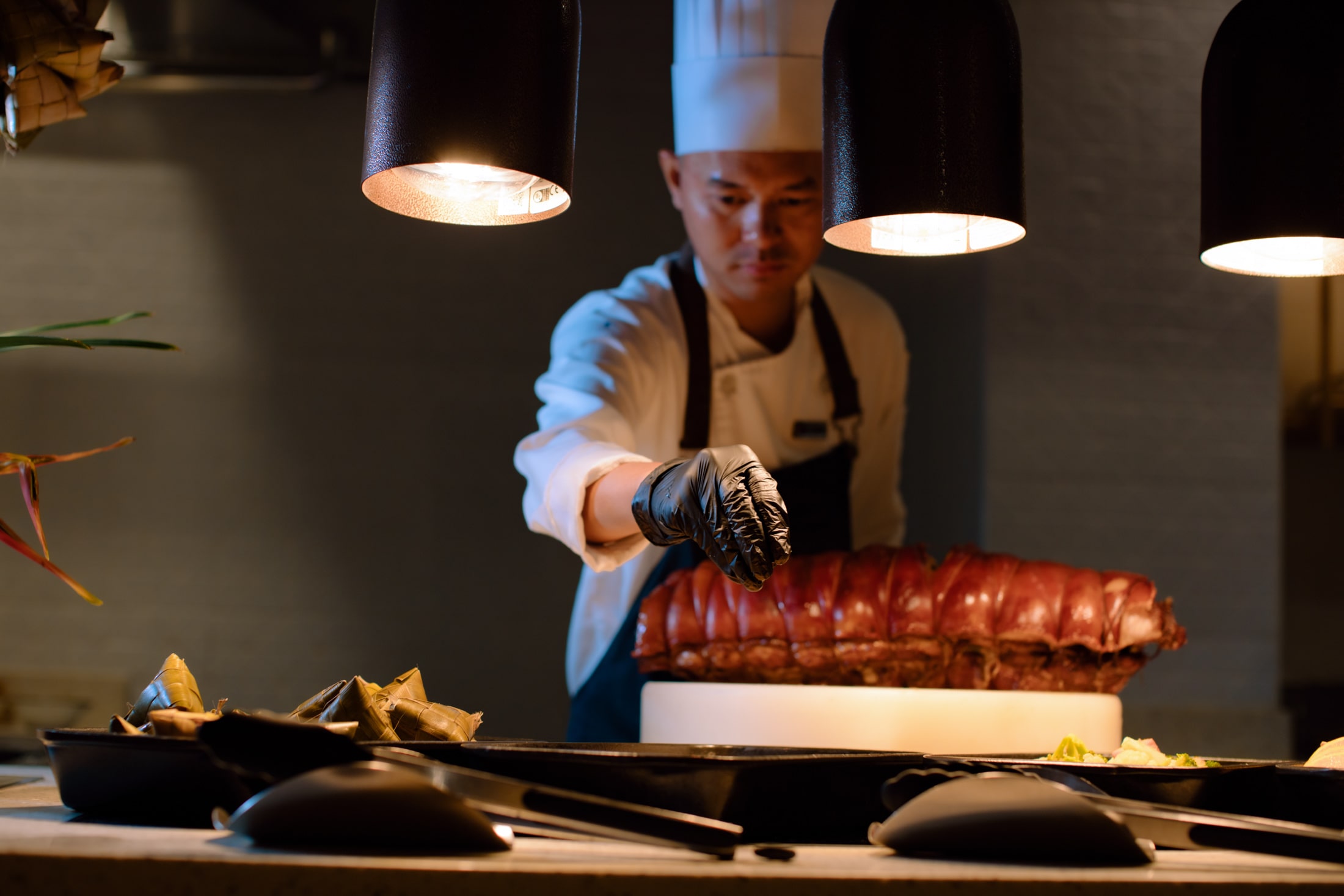
Lechon belly station at Saffron
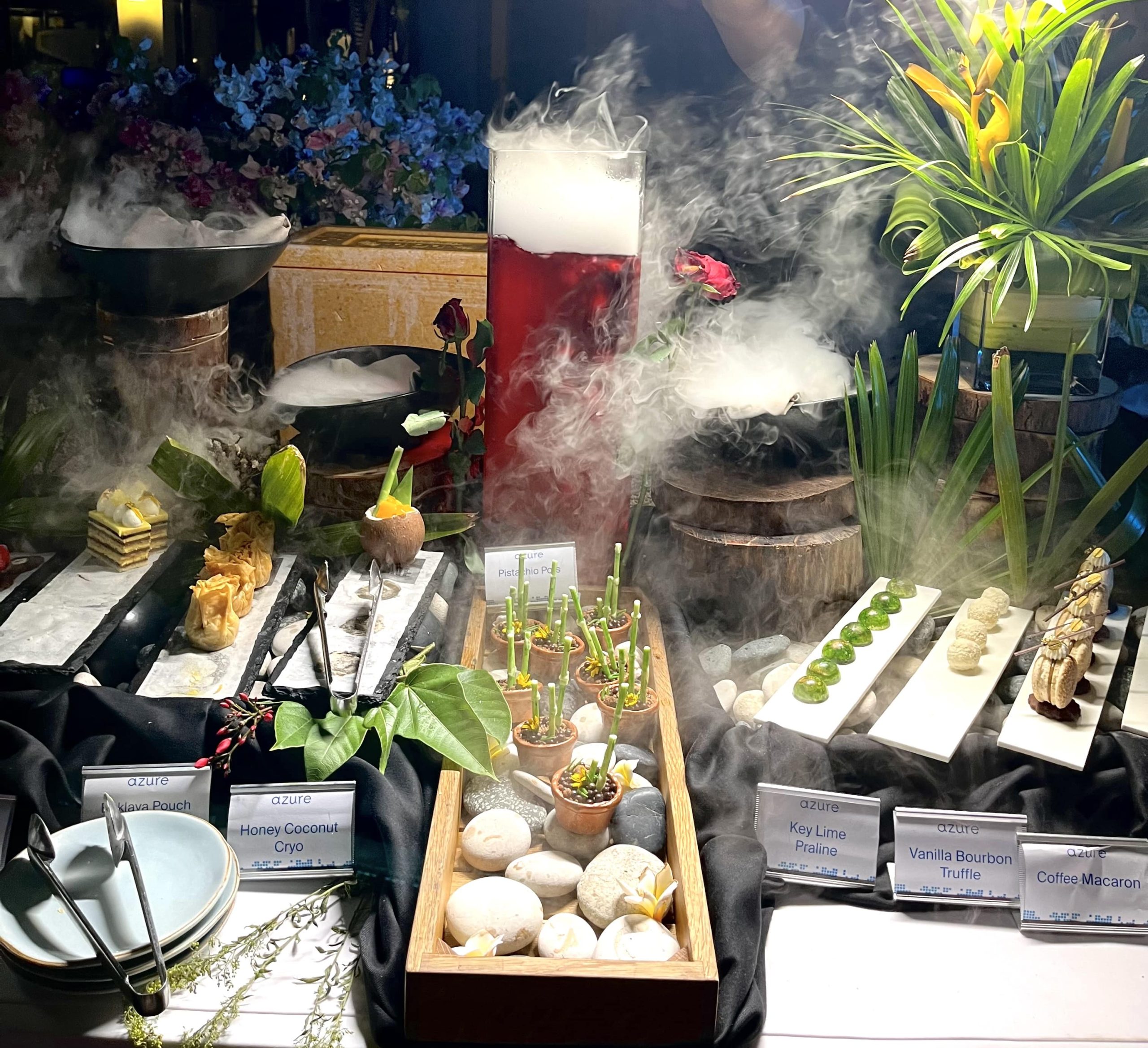
Dessert display at Azure Beach Club
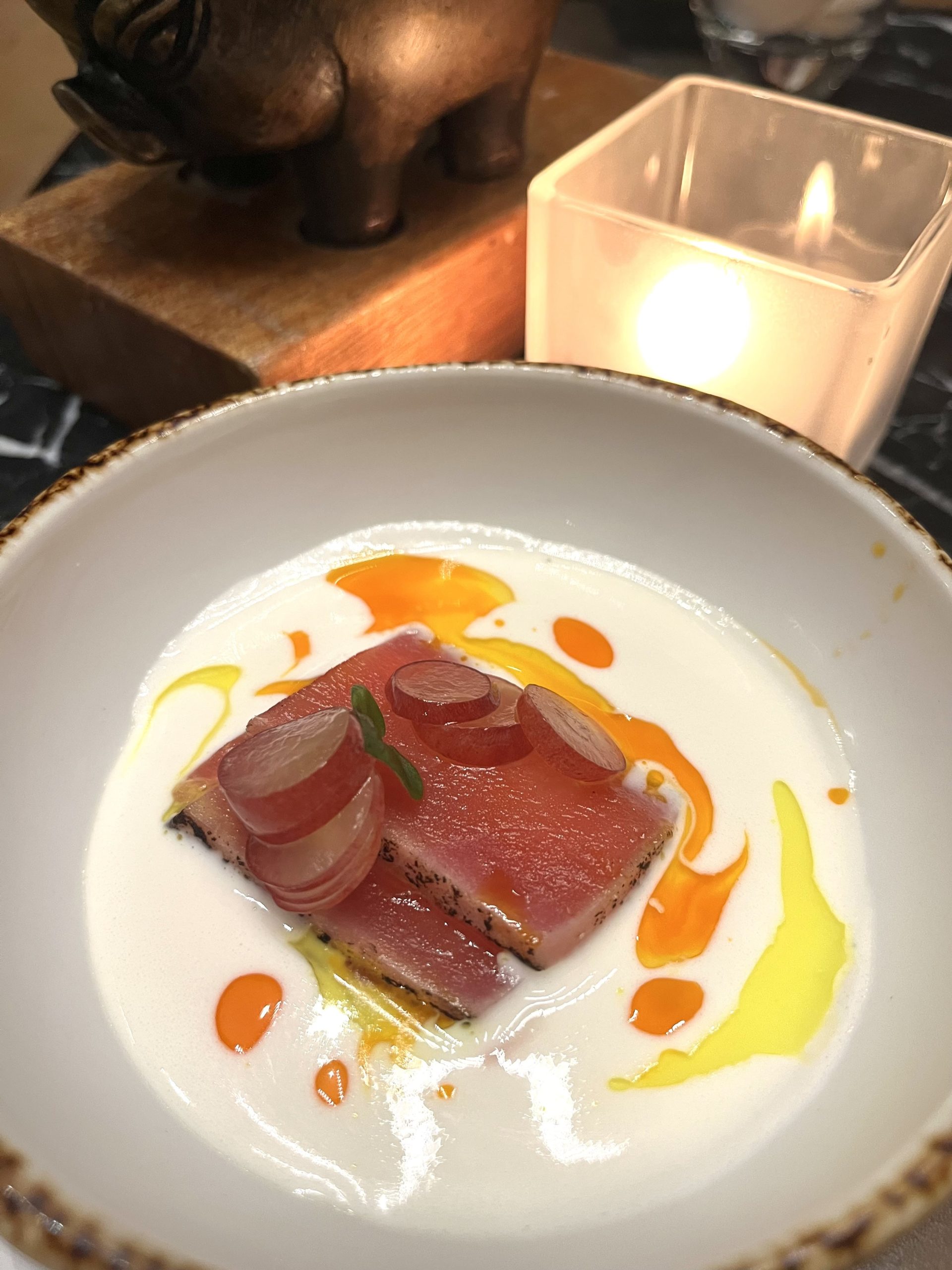
Yellowfin tuna tataki
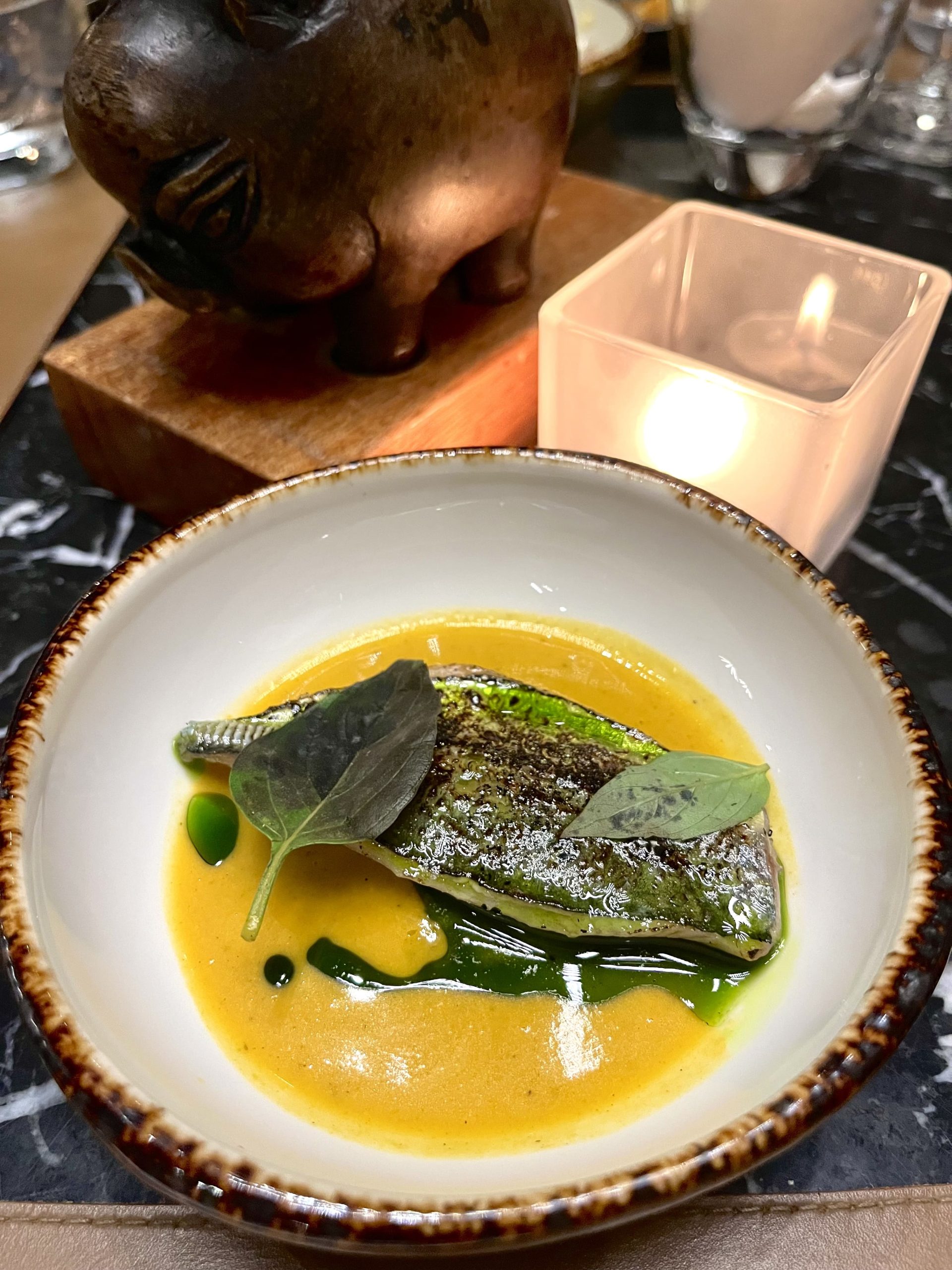
Grilled mackerel with laksa boullabaise
The night sky and the distant lights of neighboring islands were the perfect backdrop for a high-energy LED dance performance and fantastic fireworks display that left guests in awe and applause.

Rose Hudson

Chele Gonzalez
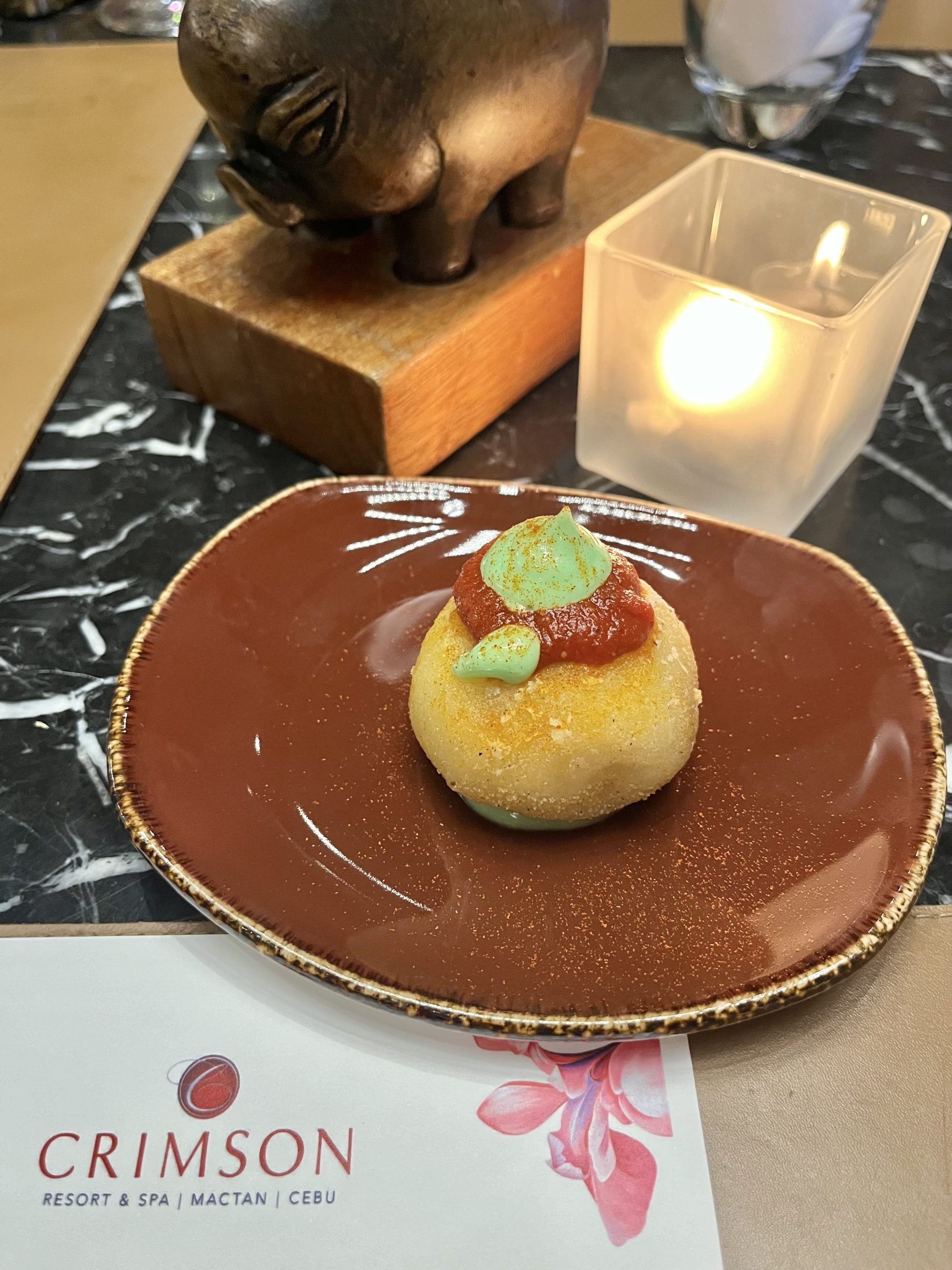
Brava potato with chorizo at Enye
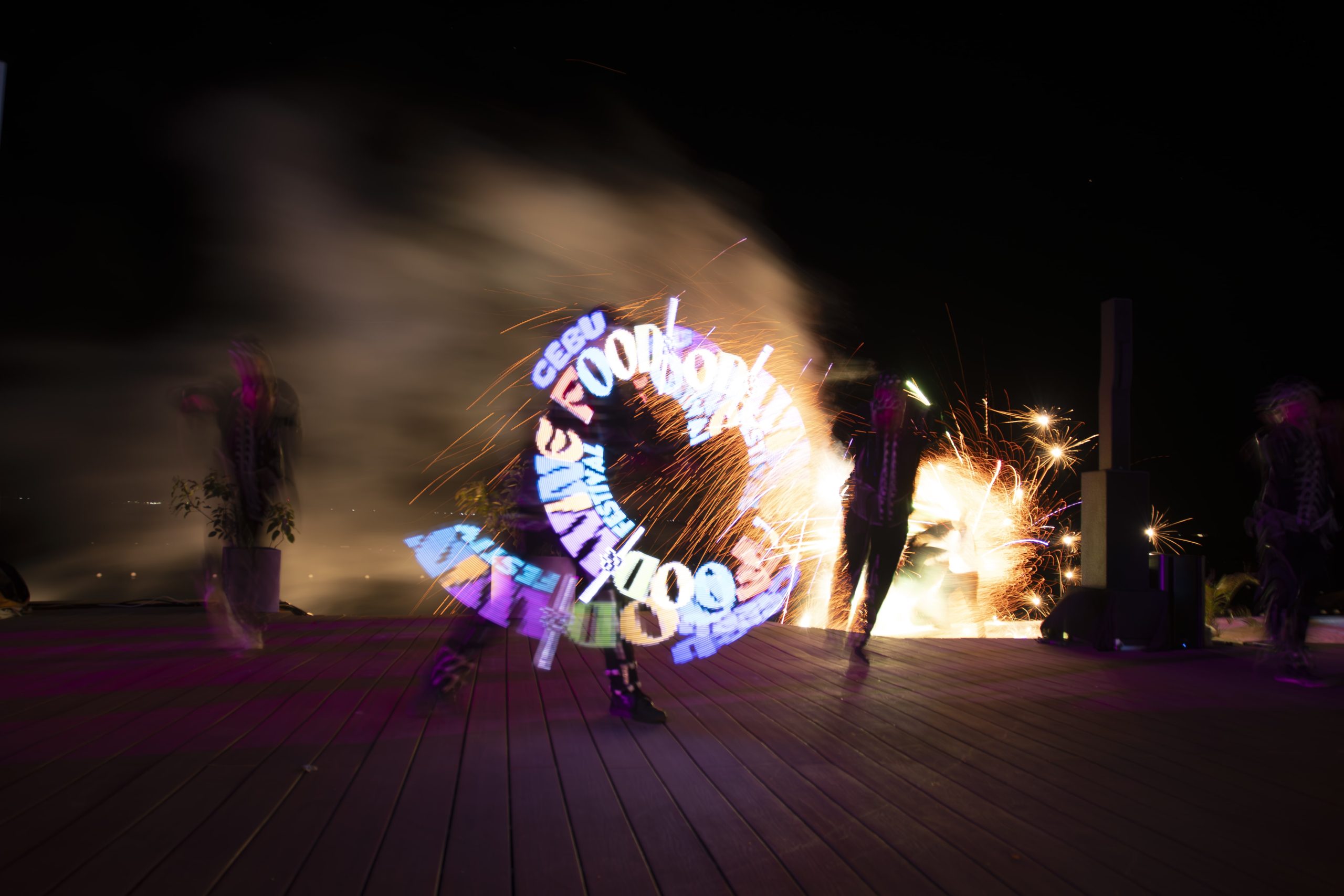
LED and Tron Dance

Aka Private Room
The Cebu Food and Wine Festival is supported by the Department of Tourism – Philippines, Visit Central Visayas, the Cebu Chamber of Commerce and Industry, Cebu Business Month, and Cebu Pacific Air.
Events
The First NUSTAR BALL
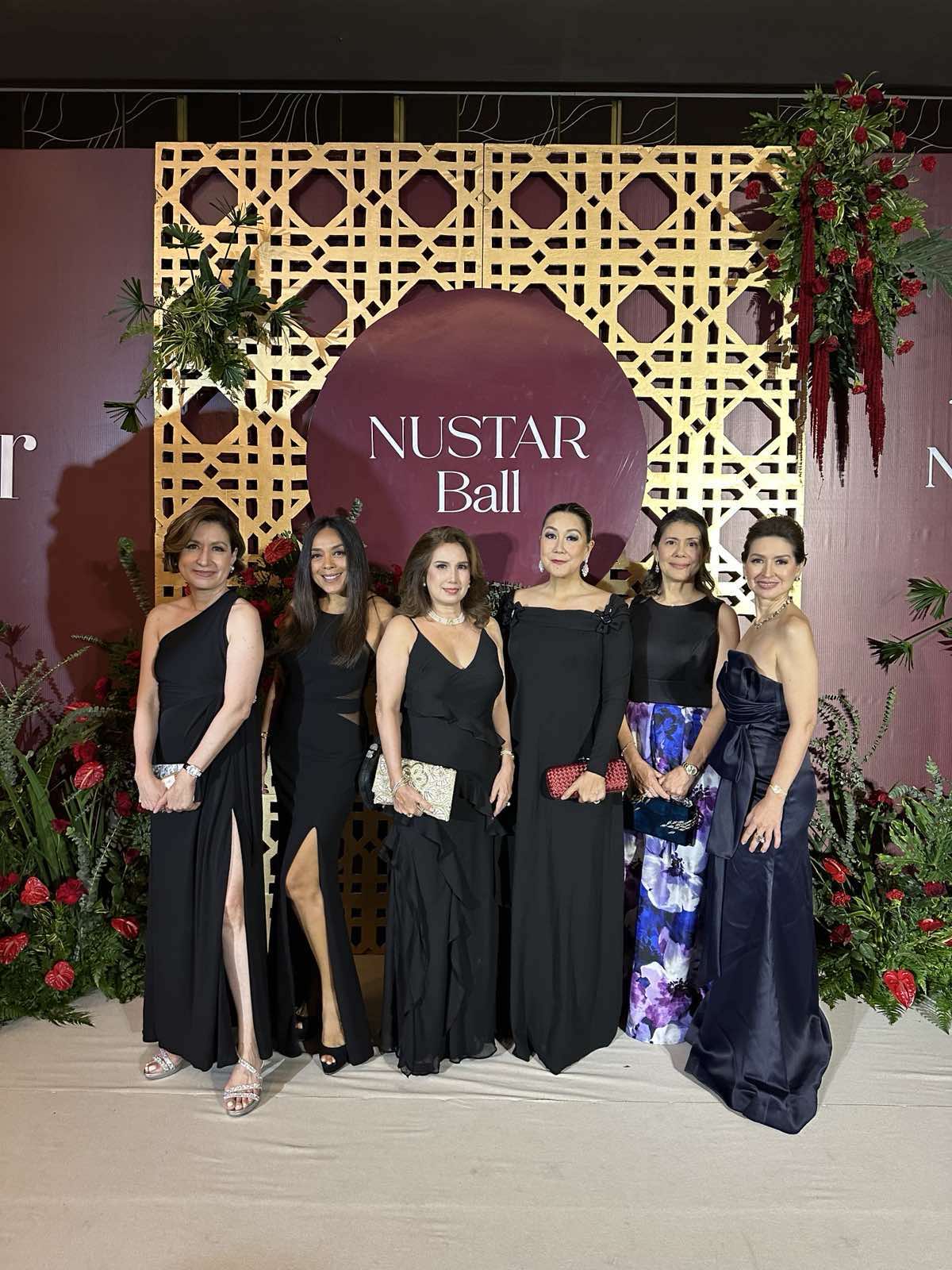
The NUSTAR Ballroom, a magnificent venue at the NUSTAR Resort and Casino in Cebu, sets the stage for last night’s first-ever NUSTAR Ball.
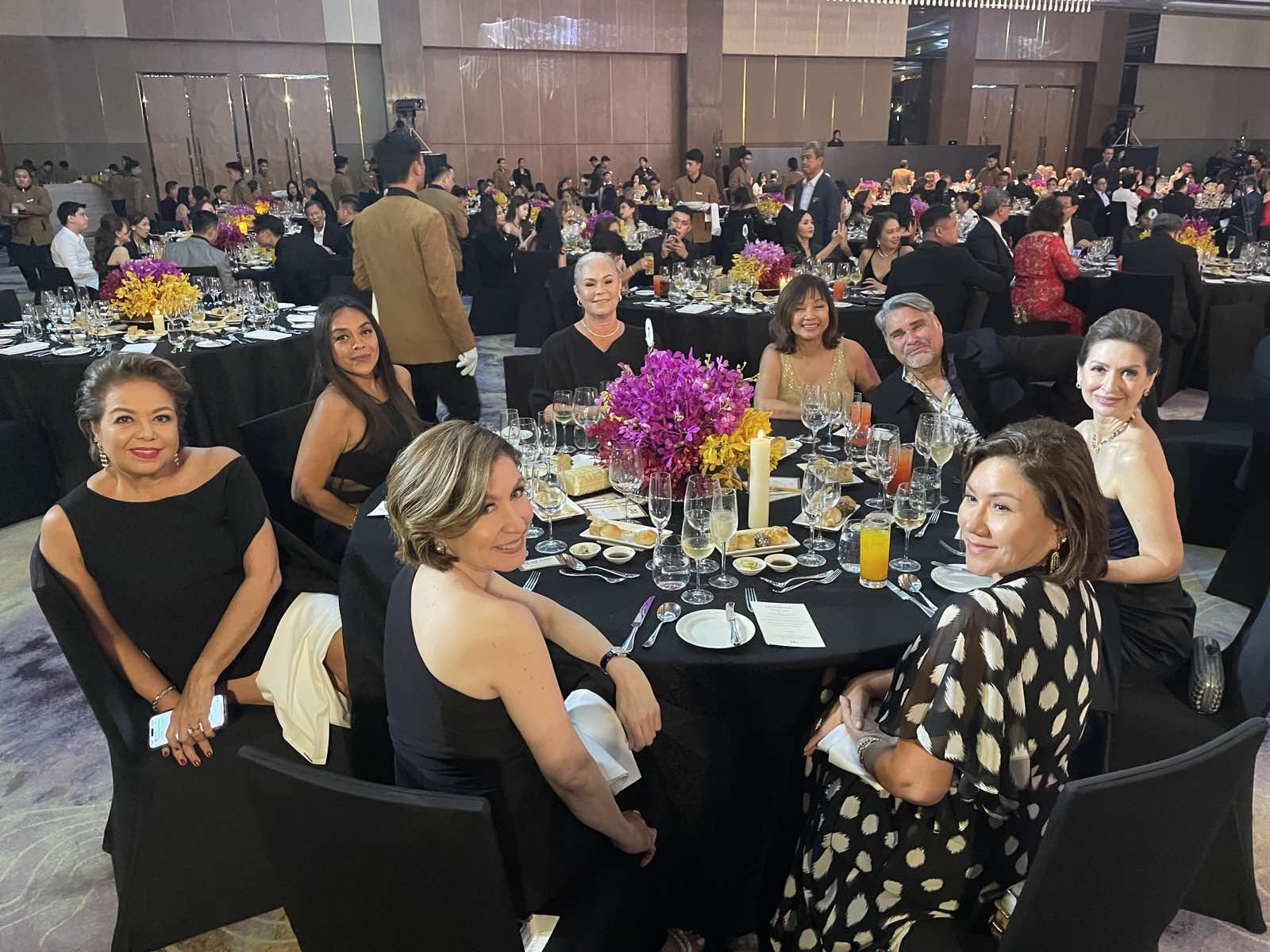
Black was the color of night at the Zee table.
Glamorous guests from Manila and Cebu converged at the NUSTAR Ballroom, an exquisite venue within the NUSTAR Resort and Casino in Cebu. The evening unfolded with a seated 5-course dinner. The opulent feast started with Beetroot Salmon Gravlax, adorned with caper berries, caviar, set with delicate edible flowers; and a main course of Compressed Pork Belly with Crackling Skin and Baby Scallops. Another highlight was the auction of coveted items like Dior and YSL handbags, a limited-edition Bulgari watch, and an exclusive 2-night stay in Nustar’s opulent 3-bedroom villa—complete with a private pool and a dedicated butler. The charity evening benefited the Cameleon Association, an NGO based in Iloilo City created in 1997 that developed a global approach to act on the causes and effects of sexual violence against children.
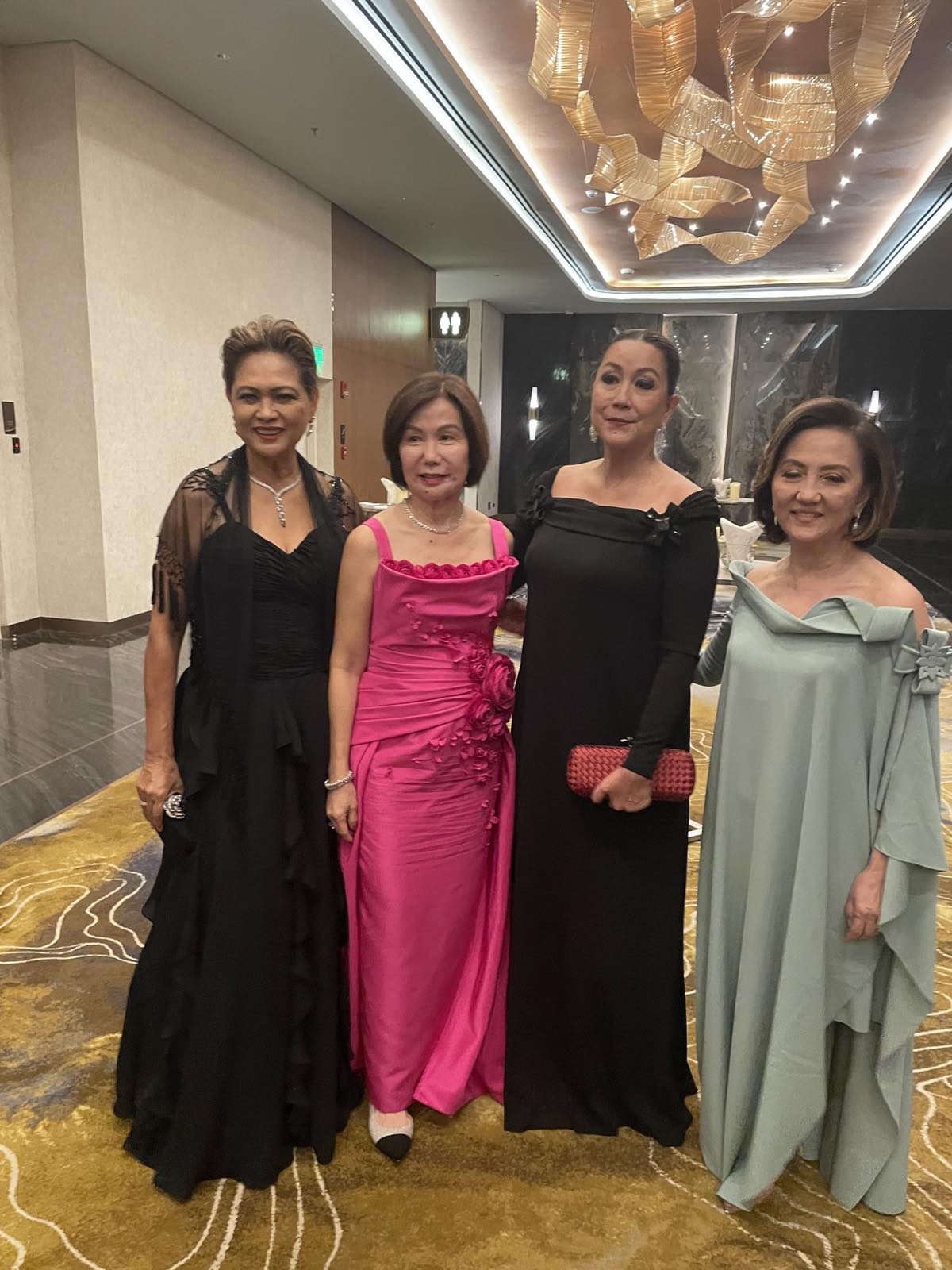
Nora Sol, Beth Go, Frances Siao and Marylou Ong
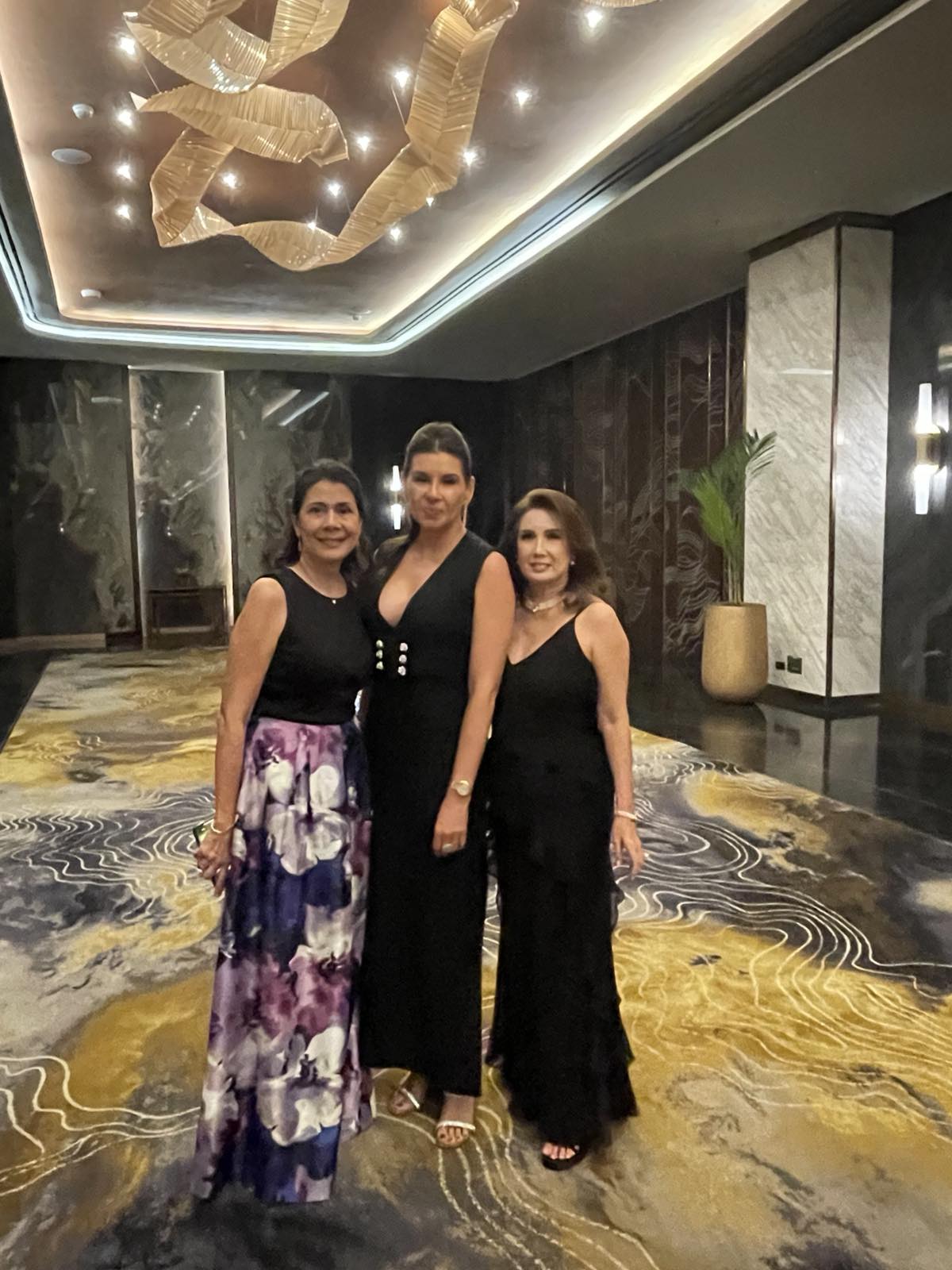
Ina Ronquillo, Maryanne Aboitiz and Jackie Lotzof
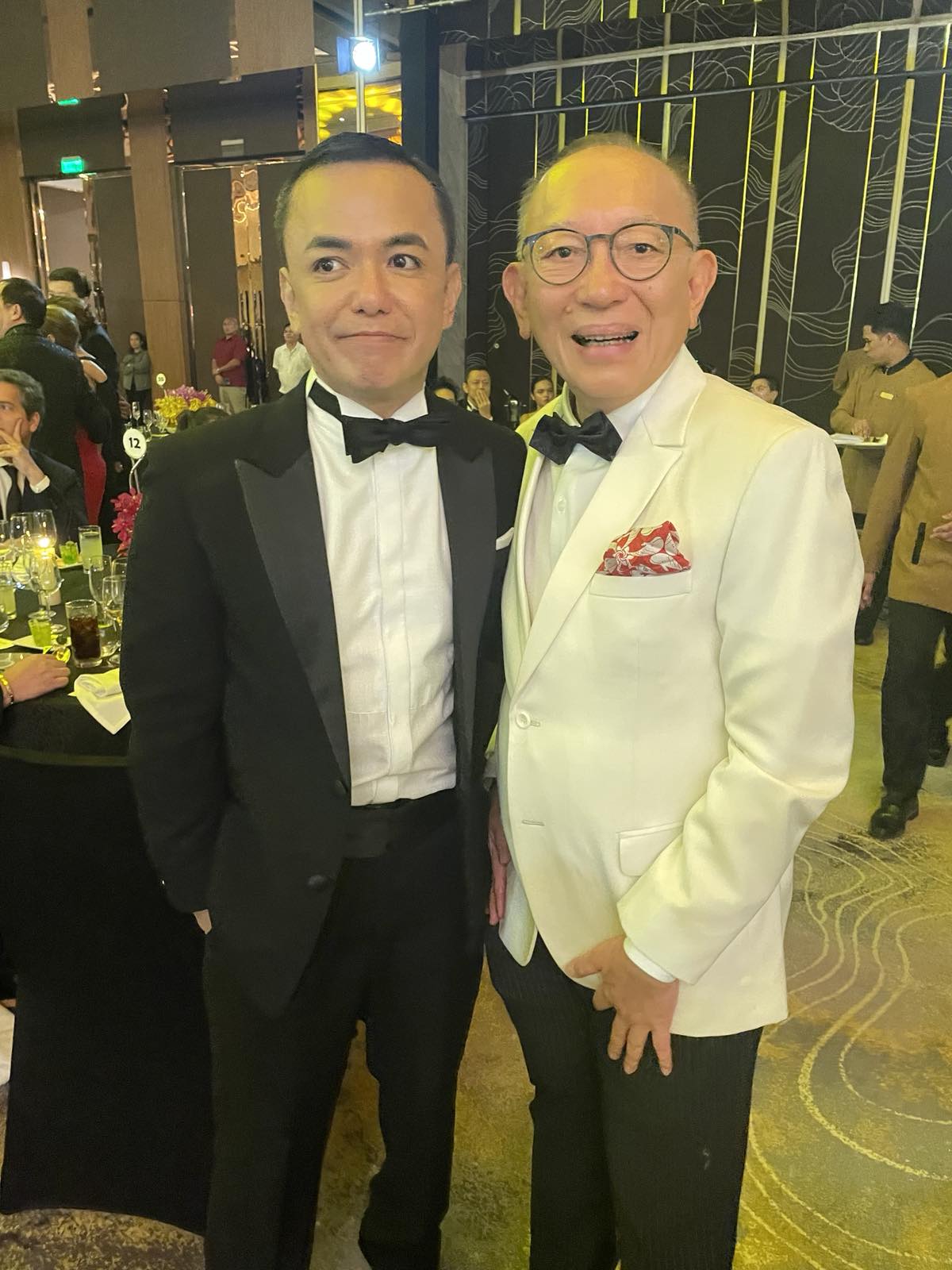
Designers Jun Escario and Philip Rodriguez
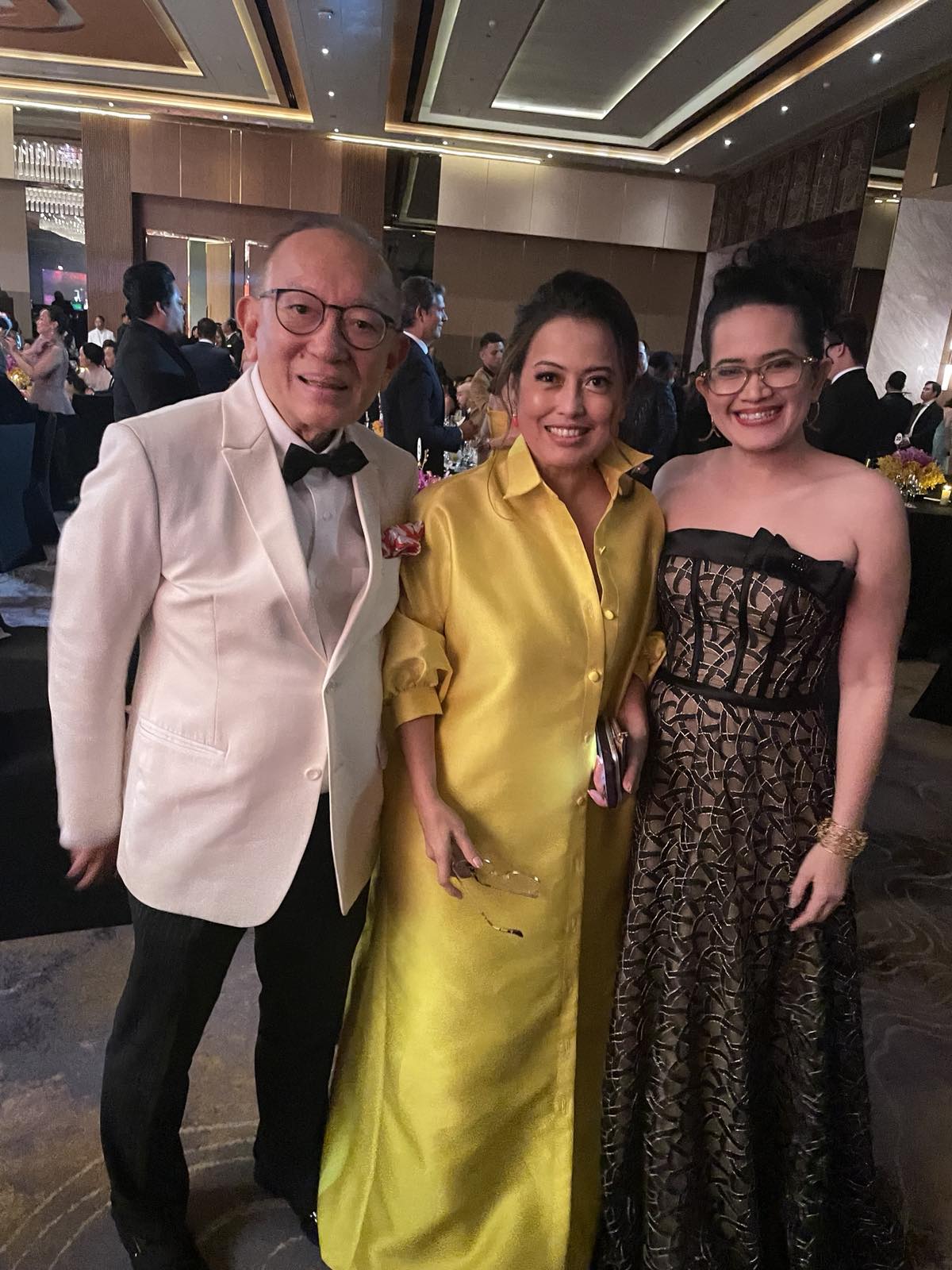
Philip Rodriguez with NUSTAR Malls two power ladies: May Adolfo and Joanna Salazar
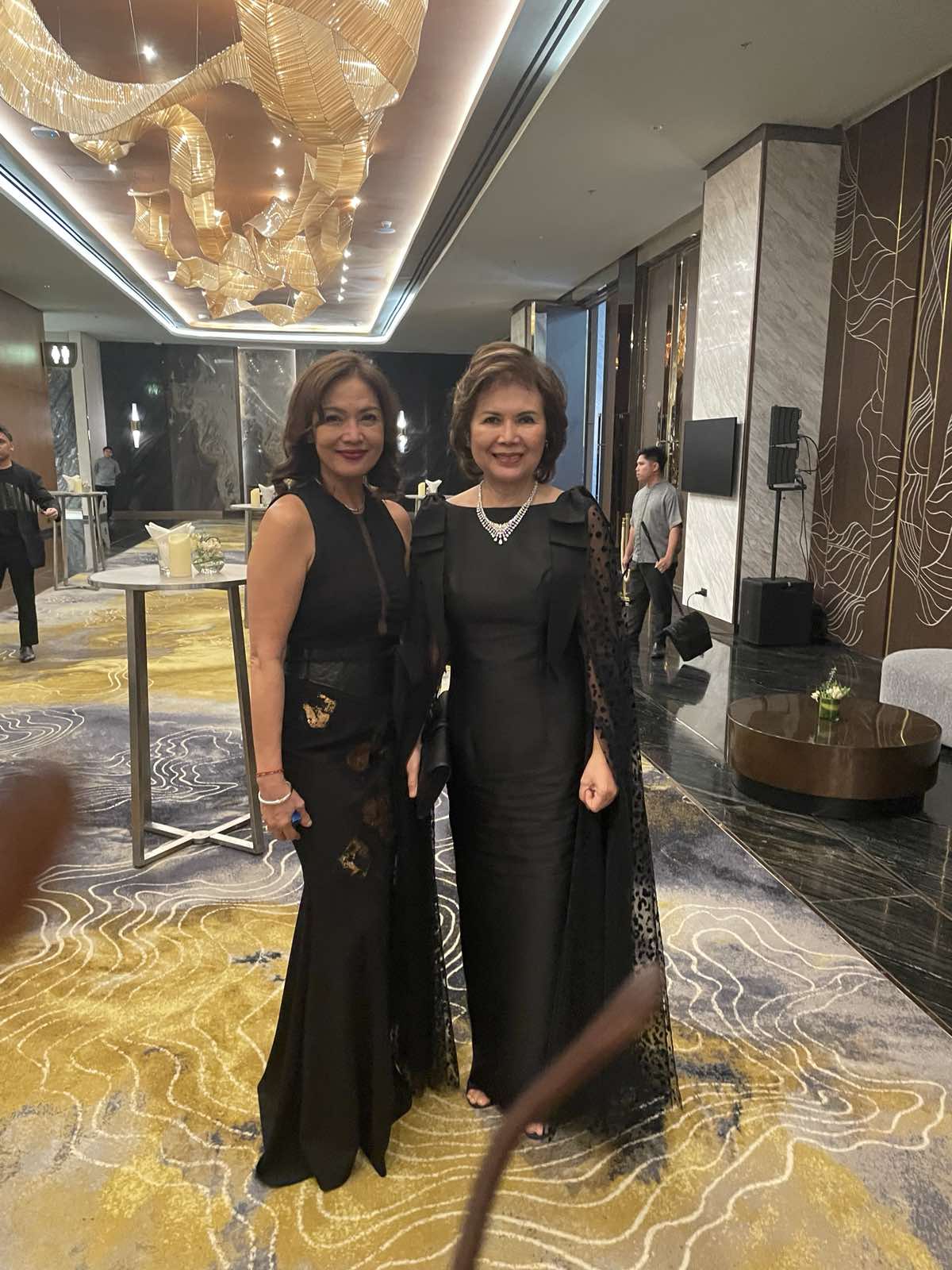
Lana Osmeña with Mariquita Yeung

PJ Castillo and Kaye Abad with Cary Santiago

Drew Sarmiento with LV Manager Adrian Decuigan
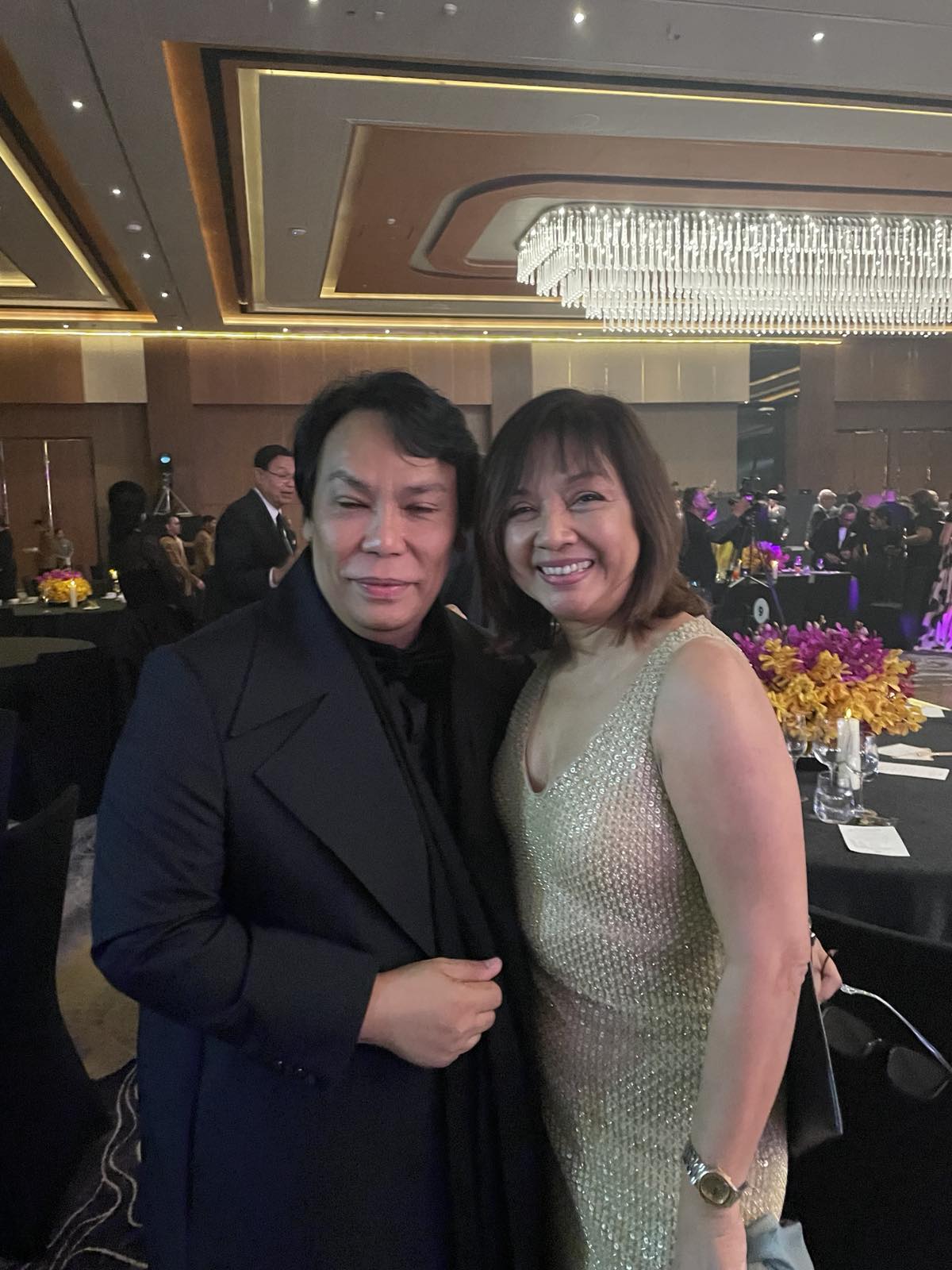
Cary Santiago with Eva Gullas

Manila socialites Julie Boschi and Ching Cruz with June Alegrado
It was a night of elegance, luxury, and unforgettable memories as ladies in long gowns and gentlemen in black ties danced the night away.
Events
Flying Tiger Copenhagen Lands in Cebu

By Joanna Cuenco
June 13 – Cebu City | Danish lifestyle brand Flying Tiger Copenhagen has landed in Cebu, opening its first branch in the Philippines outside Metro Manila at the upper ground floor of SM Seaside City.
Since its first store in Copenhagen in 1995, Flying Tiger has aimed to share products that not only look good, but make people feel good too. There’s something for everyone aged one to 100: toys, art materials, homeware, party supplies, workout gear, travel essentials, fashion accessories, and more. There will be fresh drops at the store every three to four weeks, so there’s always something exciting to look forward to and share with family and friends.

Product designs range from minimalist and “aesthetic” to cute and kitschy. Find lifestyle essentials like food storage and home organizers, tea towels and toothbrush holders, to some awesome things you didn’t know you needed, like a handheld sewing machine and a beach chair for your phone.


Even though the 200+ square meter space is fully stocked with hundreds of items, the store layout and neat display make it such a joy to look at all of the things and make the shopping experience easy and enjoyable. Flying Tiger believes a richer life does not cost a fortune, so items start at only P30, or even lower with some special promos.
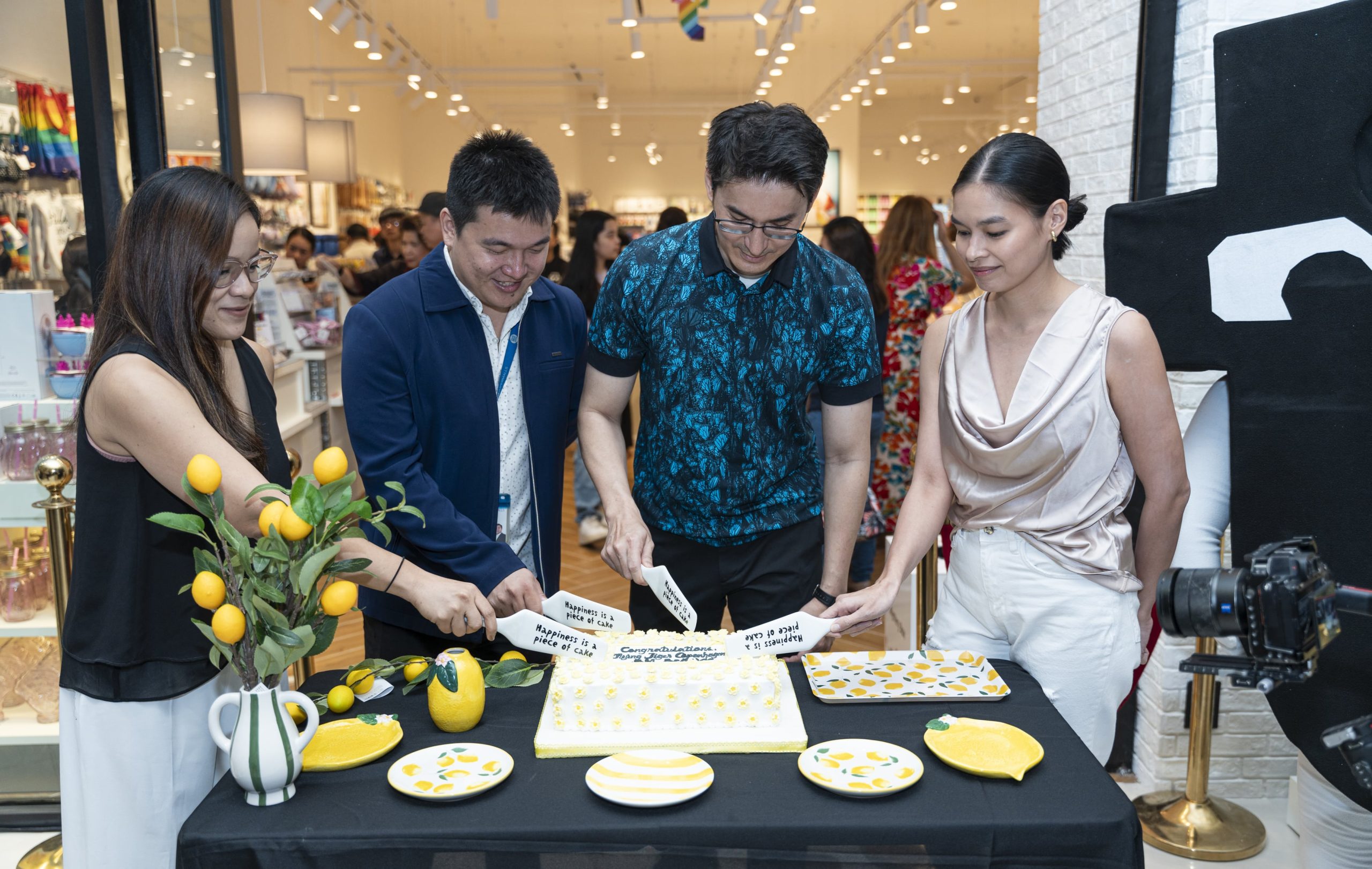
The store opened with a traditional Danish cake-cutting ceremony with Jet Tan, Flying Tiger Copenhagen Store Operations Manager of APAC Region; Gladhys Rodriguez, Merchandising Manager of Flying Tiger Copenhagen Philippines; Billi Jin Esguerra-Perez, Marketing Manager of Flying Tiger Copenhagen Philippines; and JB Tan, Mall Manager of SM Seaside City Cebu.

Zandra Len Salvador and Drew Sarmiento
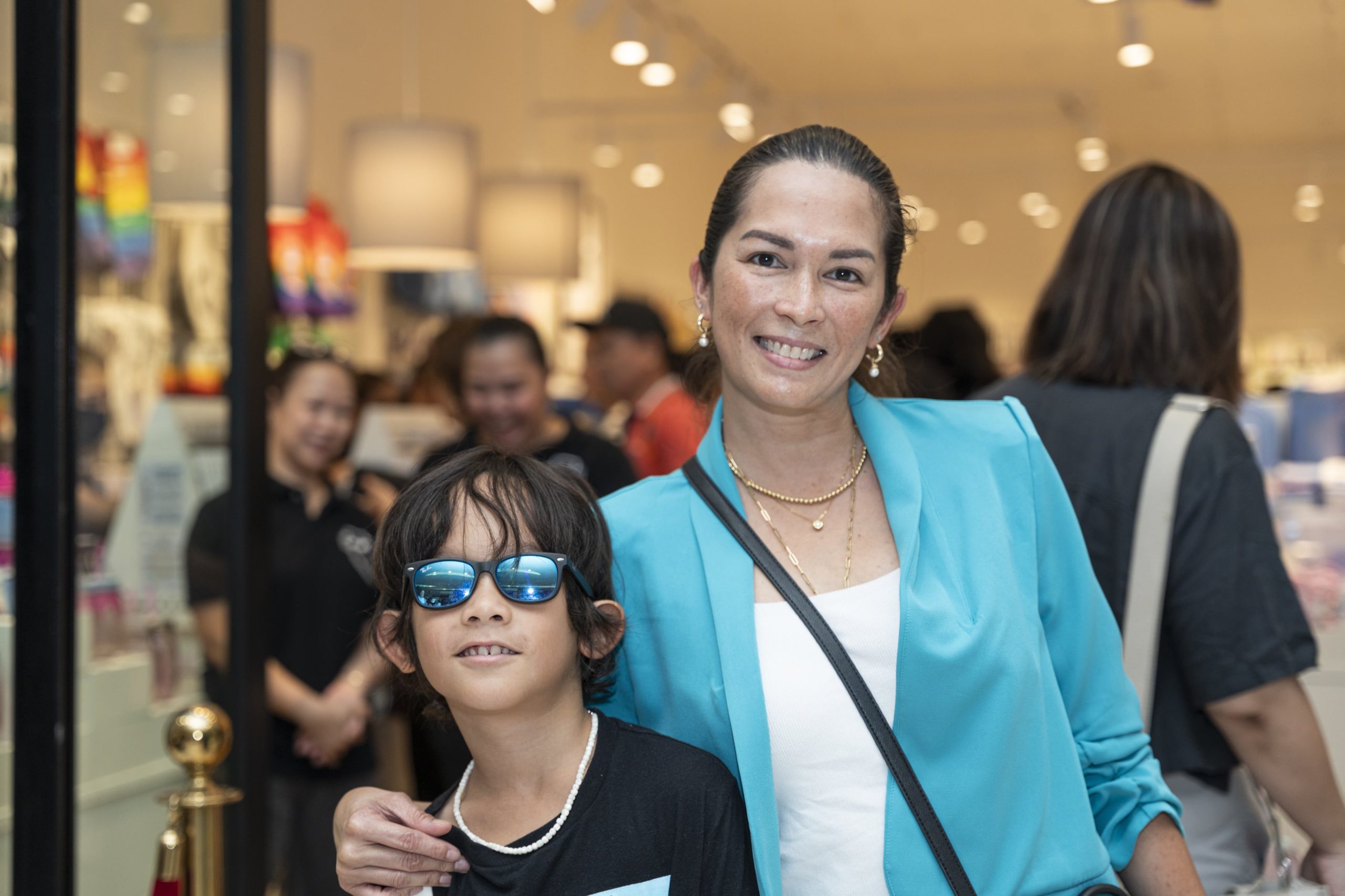
Sarree Pimentel with Lian
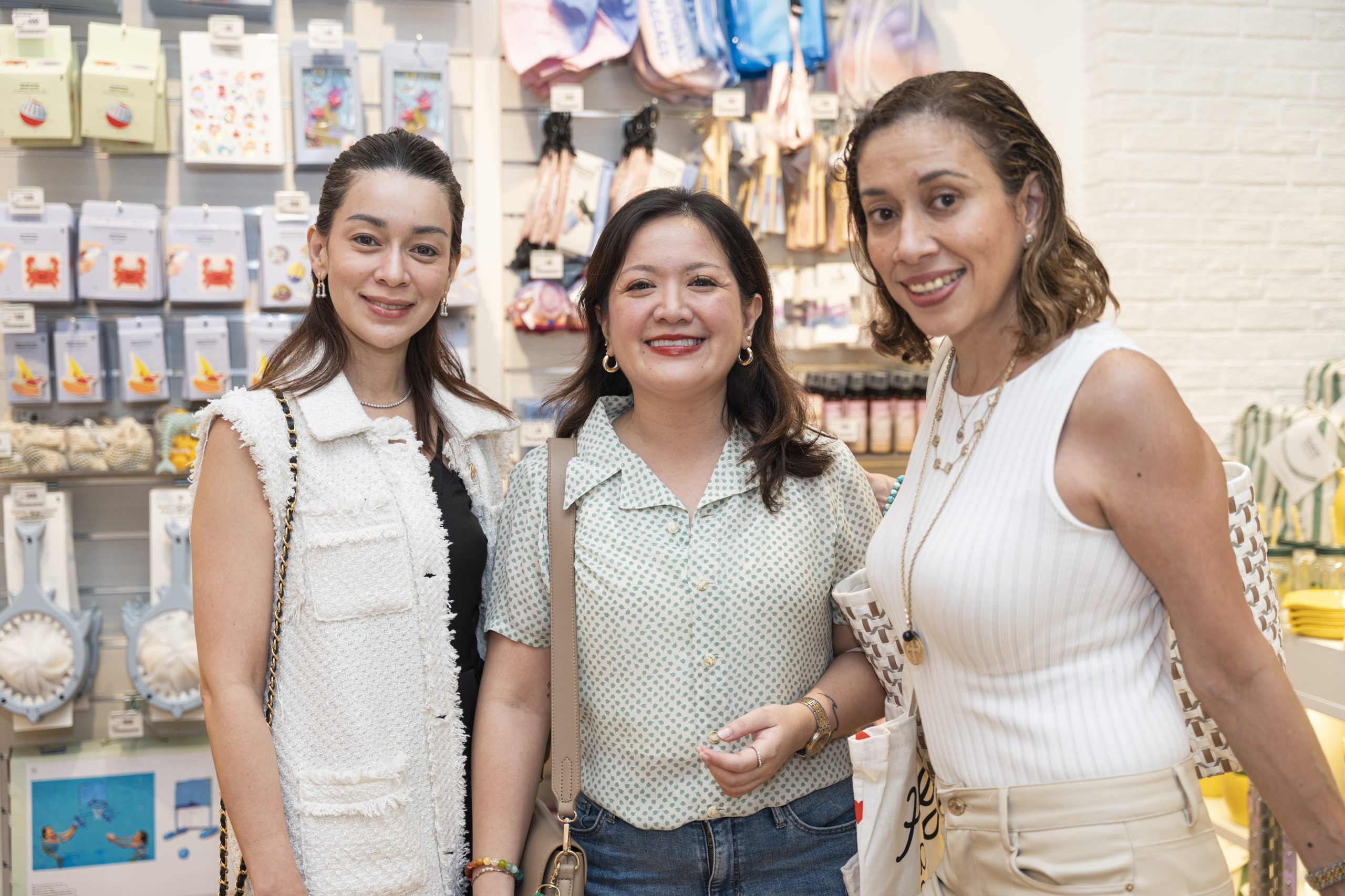
Rizanne Tiongko, Joanna Cuenco and Anya Morrissey
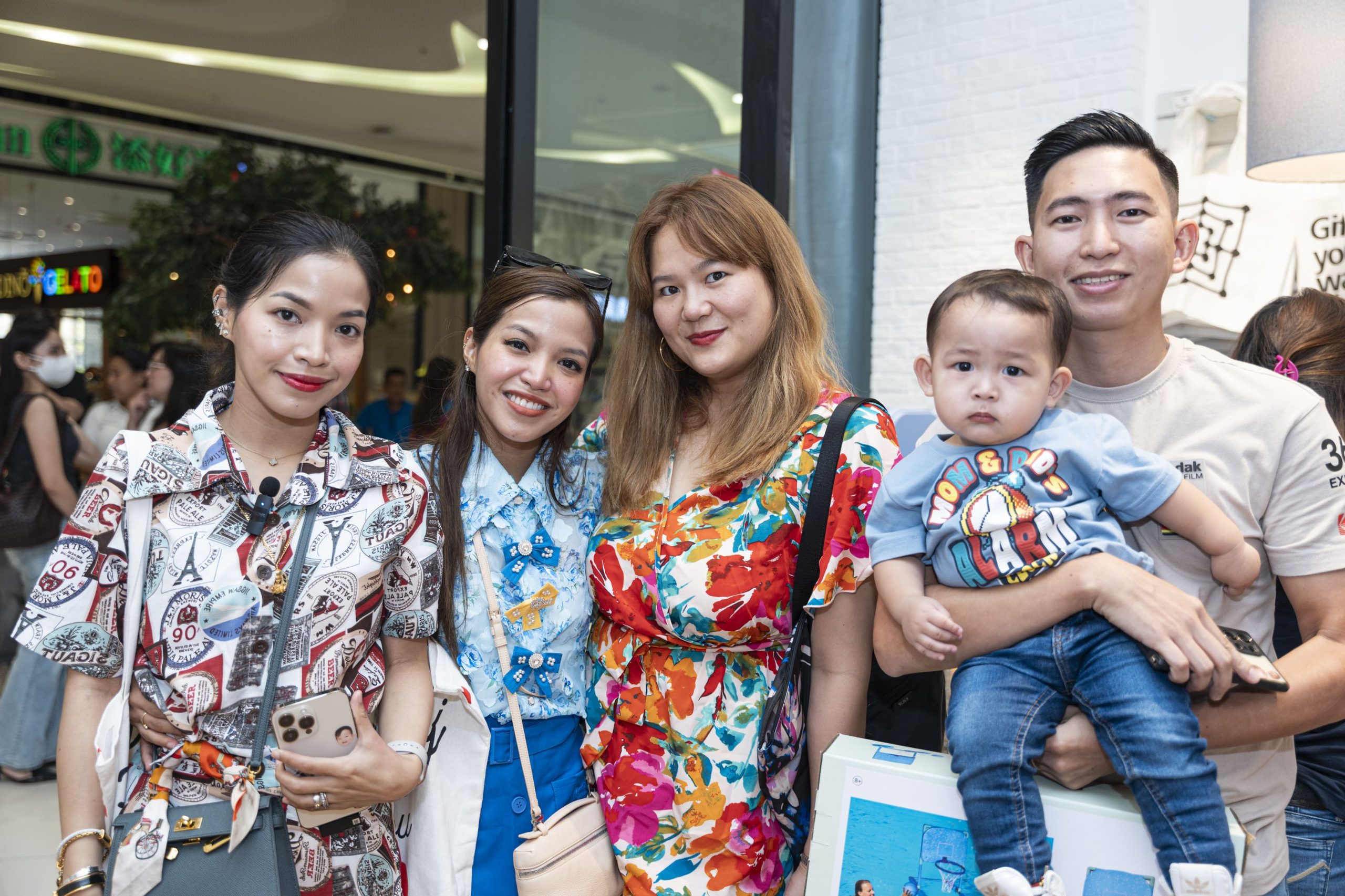
Jen and Jas Sarmiento, Rere Dakay, Kirby Yu with Kayden

Jaja Chiongbian Rama with Sebi and Georgiana

Eleni Paray, Hazel Tirol and Mitchelle Lua
Flying Tiger is exclusively distributed in the Philippines by Stores Specialists, Inc., the country’s largest specialty retailer that handles a network of 593 stores and 94 brands, including some of the most recognized names in the world.
Facebook: @FlyingTigerCopenhagenPH
Instagram: @flyingtigerph
-
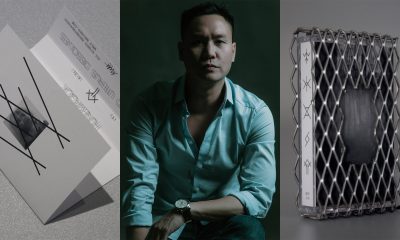
 Design3 months ago
Design3 months agoFilipino graphic designer makes history, joins Switzerland’s Museum of Avant-garde among genre’s greats
-

 Events4 weeks ago
Events4 weeks agoFlying Tiger Copenhagen Lands in Cebu
-
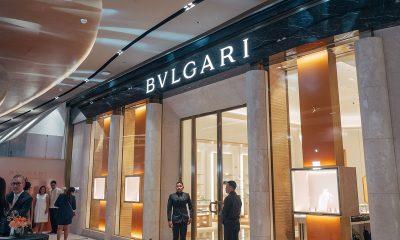
 Events2 months ago
Events2 months agoBVLGARI in Cebu
-

 Events2 months ago
Events2 months agoTrade in Your Old Watch and Save Big on a New Timepiece at The Watch Store
-

 Design3 months ago
Design3 months agoPottery Barn and West Elm Launches Designer’s Rewards Circle in Cebu
-
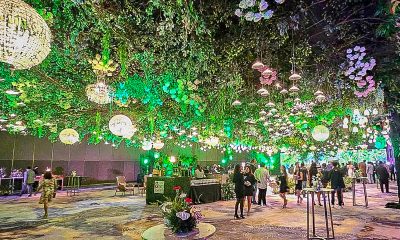
 Eats2 months ago
Eats2 months agoA Moving Feast: Cebu Food and Wine Festival 2024 Opens in NUSTAR Resort
-
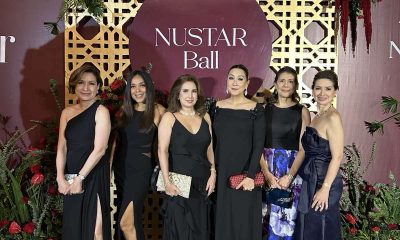
 Events3 weeks ago
Events3 weeks agoThe First NUSTAR BALL
-
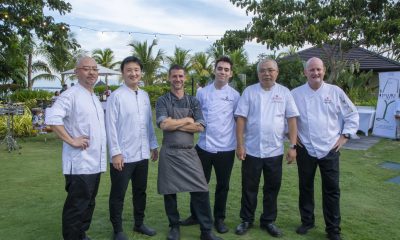
 Events2 weeks ago
Events2 weeks agoA Feast for the Senses




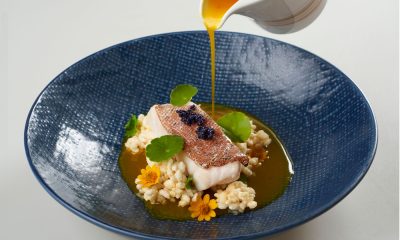








You must be logged in to post a comment Login